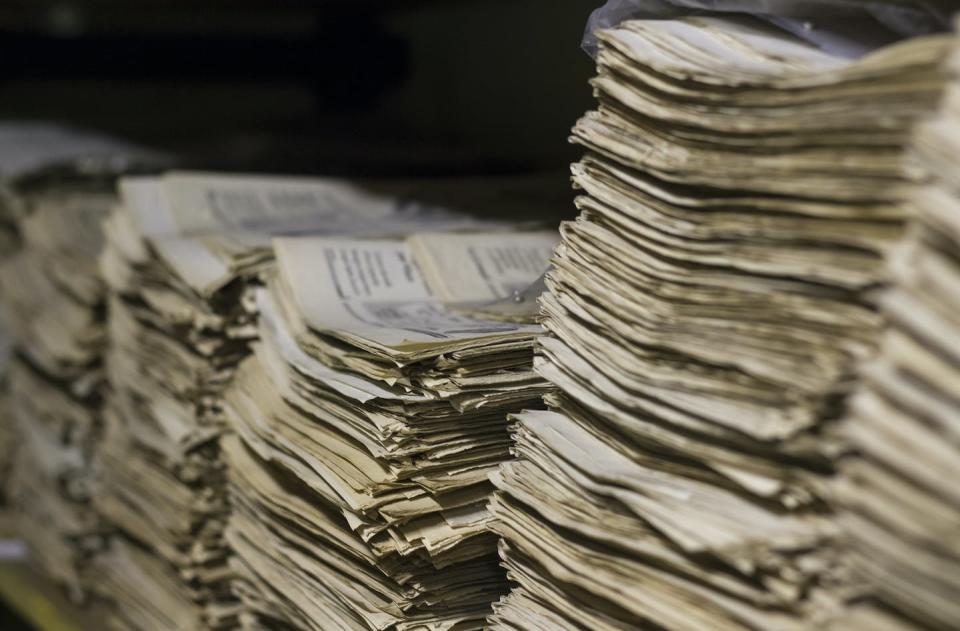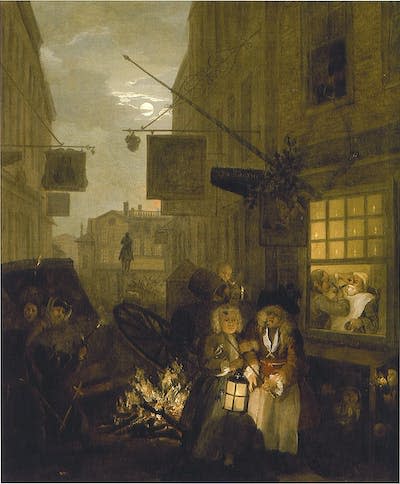Why do we read about accidents? Lessons from 18th-century English newspapers

“If it bleeds, it leads” is a well-known maxim associated with journalism. Accident reports often attract readers, even when their headlines give away the plot. This has been true for over three hundred years, since reading the news became part of daily life in 18th-century Britain.
Just four pages long, British newspapers of the 1700s had few images, no headlines and little separation between articles. Their random arrangement of news paragraphs is reminiscent of modern social media feeds without their algorithms. Jostling with news ranging from foreign military reports to book reviews, accounts of accidents occur as random shocks, nearly as surprising for the newspaper’s readers as the original accidents must have been for their subjects.
As a scholar who studies 18th-century British media, I often encounter accounts of accidents as I read old newspapers. Despite the different look of these newspapers, their readers evidently possessed an interest in spectacular, unusual and gory accidents that feels very familiar. The accidents most frequently reported in newspapers of the 1700s arise from traffic, working conditions, natural disaster and human error.
Traffic accidents
18th-century London’s narrow roads were congested with horse-drawn vehicles, pedestrians and panicky animals. Traffic accidents were frequent. Readers of the Morning Chronicle on March 9, 1784 could trace a runaway ox’s destructive path through the city:
“Yesterday morning an over-drove ox tossed a boy in Smithfield, but fortunately was not much hurt; the ox then ran down Cow-cross, and opposite Mr. Booth’s, the distiller, tossed an ass, carrying a pair of panniers, filled with dog’s meat, nearly to the height of the one pair of stairs windows, and before he could be secured terribly gored a young man, who was taken to St. Bartholomew’s Hospital.”
Readers were no doubt reassured that the ox was unhurt after tossing a small boy and amused that the animal ran amuck down the appropriately-named street “Cow-cross.”

Traffic incidents involving notable people were particularly popular. The Morning Chronicle of April 9, 1800 reported that the Duke of York had been enjoying a ride when “a dog belonging to a driver of cattle ran across the road, and impeding the progress of the horse, the animal fell on his Royal Highness, and the Duke unfortunately being entangled in the stirrup, was dragged a considerable way.”
Luckily, two patriotic men in a passing chaise made room for the injured Duke and tipped the post-boys two guineas to carry him to a surgeon.
Waterways were equally treacherous. Pity the poor father who, having placed his child and his nurse in a boat, then saw them fall into the Thames. He “with great Difficulty took up the Nurse, but the Child was drowned: The Child had been brought that Day from Wandsworth to be seen by its Parents, and was returning when this melancholy Accident happen’d,” lamented the Daily Post of Sept. 16, 1729.
Sympathy or laughter?
Eighteenth century readers were often given emotional cues from newspapers’ descriptions of accidents as “unfortunate,” “melancholy” or “shocking.” These small adjectives had the power to transmute unseemly gawkers into sympathetic witnesses. On March 1, 1801 Bell’s Weekly Messenger reported the tragic fate of Lady Hardy:
“[S]itting alone after dinner reading, but falling asleep, her head dress approached too near the flame of the candle, and caught fire; it communicated to other parts of her dress before her Ladyship awoke. On awaking, and perceiving her situation, she inadvertently ran out into the passage, where the draught of air so much increased the flames, that she was found entirely in a blaze… she was rolled up in a carpet, which instantly extinguished the fire; but her Ladyship was so dreadfully burnt, that she lingered till four o’clock the next morning in the most excruciating agonies, and expired.”

Occasionally, a newspaper’s tone seemed more amused than sympathetic. “A few Days since as the Son of Mr. Mitchell … was felling a Tree, it fell on him,” reported the General Evening Post of Dec. 17-19, 1747. The unfortunate Mr. Bacon was struck by lightning so violently that it “made his body a most shocking spectacle,” punned the Public Advertiser of July 18, 1787.
Present-day journalists’ codes of ethics stress sensitivity and avoid intruding into others’ grief. Eighteenth century Britons’ sense of humour, however, could be ruthless.
Workplace accidents
Accounts of work-related accidents abound in the news of the 1700s. Bricklayers and carpenters plummet from scaffolding. Painters and glaziers fall through windows. Watermen drown.
As Fog’s Weekly Journal reported, one poor currier, “as he was standing on a Stool to hang up some Skins in his Shop … fell with his Neck upon the Edge of a sharp Iron used in that Trade.”
Modern journalists have a duty to inform the public about accidents, to provoke investigation into their causes and offer strategies for increased public safety. In 18th-century newspapers, there is less emphasis on preventative legislation and institutional culpability and more focus on personal diligence.
Articles often also stressed the admirable fortitude of an accident’s victim or responder. The London Evening Post on Jan. 1, 1760 reported a courageous post-boy’s efforts to deliver the mail:
“[M]istaking the Road, [he] got into a Wood where there was a great Declivity, and both Horse and Lad fell into the River, broke the Ice in one of the deepest Places, and sunk to the Bottom; the Horse could not get out, but was drowned; the Boy got hold of a Twig, and by that Means saved his Life, yet exposed it again to the greatest Danger, by endeavouring to recover the Mail, which he did, with the Saddle, to the Surprize of every one.”
Better still, the boy delivered the mail the next day. In the newspaper record, pluck and valour are celebrated characteristics.
Accidents interrupt our daily routines with their disturbing novelty. Like fables, 18th-century newspapers’ short tales of accidents deliver moral lessons on the value of diligence, empathy and courage. Stories of fatal accidents are memento mori: in their remembrance of death, they prompt us to seize hold of life.
This article is republished from The Conversation, an independent nonprofit news site dedicated to sharing ideas from academic experts. Like this article? Subscribe to our weekly newsletter.
It was written by: Leslie Ritchie, Queen's University, Ontario.
Read more:
Leslie Ritchie does not work for, consult, own shares in or receive funding from any company or organisation that would benefit from this article, and has disclosed no relevant affiliations beyond their academic appointment.

